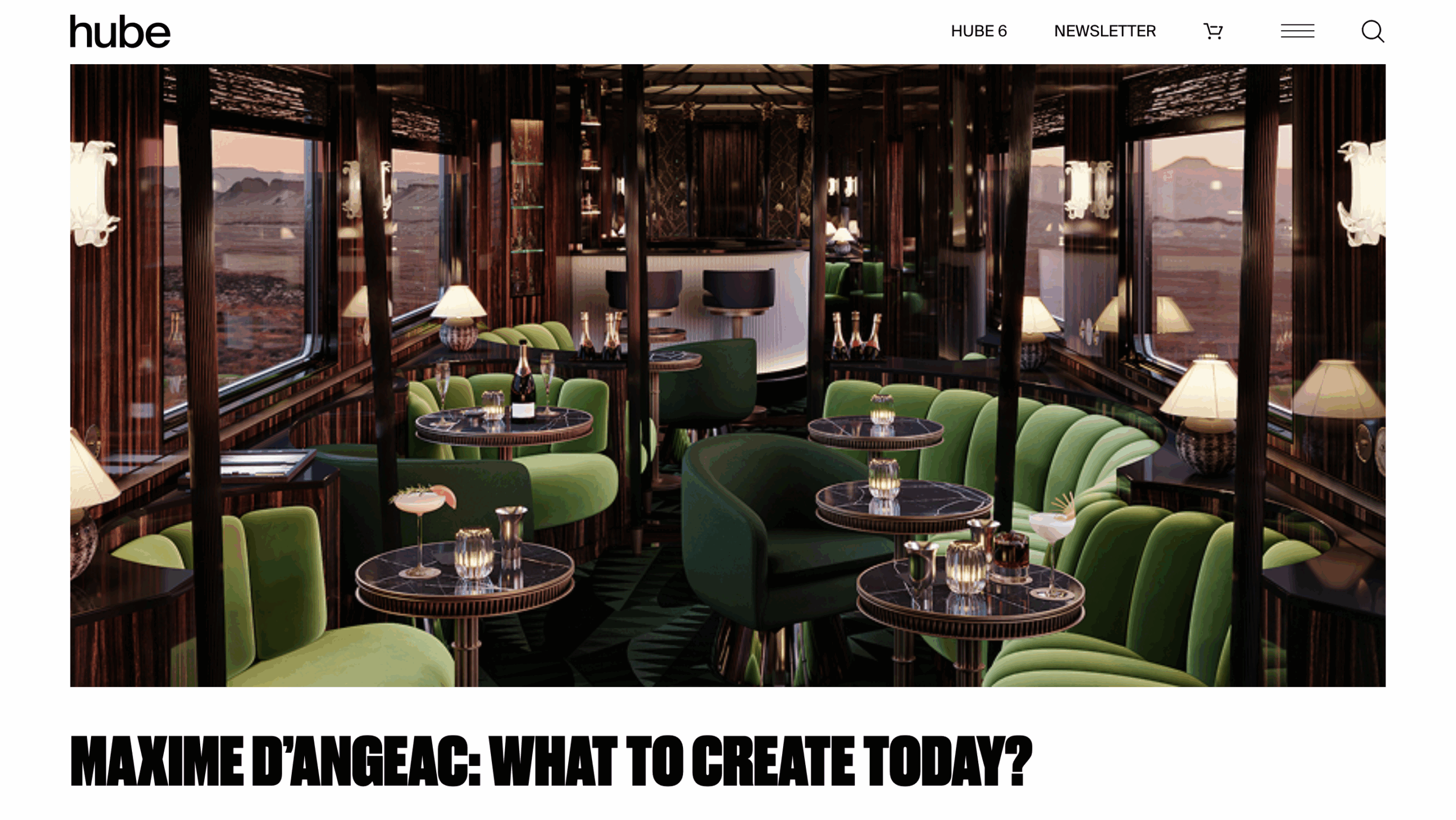Hube

From the hand-drawn lines of his studio to the polished brass rails of a reborn Orient Express, Maxime d’Angeac marries reverence for the past with ab unflinching drive toward the future. Over forty years, he’s honed a practice that treats every project as both a fight and a romance – where the discipline of his daily martial-arts training fuels negotiations with engineers and artisans, and where each material choice and beam of light becomes a narrative in miniature. Now, Maxime d’Angeac invites us into his world: one where the golden ratio holds more sway than passing trends, where true luxury is measured in patience and rarefied detail, and where the soul of a space is a carefully drawn as its blueprint.
Hube: Your reimagining of the Orient Express interiors isn’t just about luxury – it’s a full-blown reinvention of a legend. What was the spark that led you to translate the myth of the Orient Express into a 21st-century work of art, and how do you balance heritage with futuristic innovation?
Maxime d’Angeac : Everything was already in the DNA of the Orient Express. I put myself in the same conditions as in 1920 – drawing by hand, no computers, respecting the simple laws of the train. If you make a mistake on a train, you break your toes ou hurt your head; you must always have the right answer. Rather than chasing trends – « let’s use this fabric because it’s in fashion » – we asked: What could the Orient Express be, 100 years later, with today’s techniques and top craftsmen in wood, iron, glass and fabrics? The spark was eternal: I’ve been absorbing early 20th-century art, architecture, literature, music since I was eighteen, and the Orient Express was in the very middle of that world, almost the apotheosis of its generation. I just went through every detail, as they drew the « matrix of everything » back then, so I did the same.
h: You famously described your work as a mix of « combat and romance », even crediting your Krav Maga training as part of your creative arsenal. How does this duality manifest in your designs, and what does it reveal about your approach to architecture?
MdA: A project is always a fight – against time, budgets, clients, technical problems. It’s never a path strewn with roses. You must defend your idea fiercely so it isn’t diluted by others’ constraints. I train every day in MMA and Krav Maga; It’s meditation and concentration. That energy helps me negotiate with engineers, firefighters, pillow-sewing craftsmen – all at once. After the fight, I find calm, then dive back in. It’s yin and yang: you need equal measures of strength and seduction, of standing your ground and listening. Without that mental steel, technique, and talent alone won’t carry you ti the finish line.
